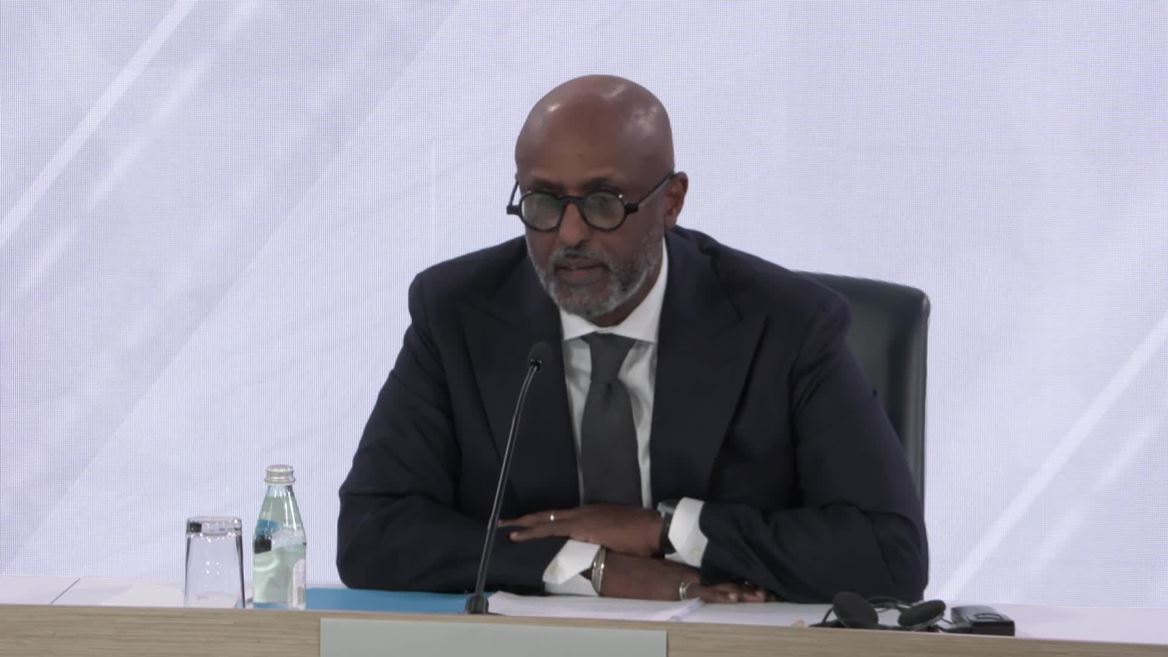The economies of Sub-Saharan Africa are maintaining stability despite ongoing global challenges, with an expected growth rate of 4.1% in 2025 and a slight increase anticipated the following year. However, Abebe Aemro Selassie, Director of the International Monetary Fund’s (IMF) African Department, emphasized during the 2025 IMF Annual Meeting that regional resilience is under pressure from weakening global demand, fluctuating commodity prices, and tighter financial conditions. Six months ago, the region had shown stronger-than-expected growth, but shifting international priorities and turbulent external environments have since intensified economic strain.
Selassie noted that global market disruptions continue to hinder progress, particularly due to uneven commodity price trends and a worsening trade outlook. While oil prices have declined, copper, coffee, and gold remain relatively high. Additionally, increased U.S. tariffs and the expiration of preferential access under the African Growth and Opportunity Act (AGOA) have further constrained fiscal flexibility for many nations, even though direct exposure to American markets is limited for most.
Despite these headwinds, several countries have demonstrated economic durability. Yet mounting vulnerabilities—such as rising debt servicing costs, shrinking foreign reserves, and reduced policy flexibility—are limiting government capacity to respond effectively. Inflation has eased across the region overall, but remains above 10% in numerous countries, complicating macroeconomic management.
To address growing budgetary pressures, Selassie stressed the urgency of structural reforms. These include modernizing tax systems through digital tools, eliminating inefficient tax breaks, and improving compliance via targeted enforcement. He emphasized that such measures must extend beyond technical adjustments by fostering public confidence in tax institutions, enhancing administrative capabilities, and conducting thorough assessments of social and economic impacts to ensure fairness.
International support remains crucial, especially as many governments face constrained fiscal space. Since 2020, the IMF has provided nearly $69 billion in financial assistance to the region, including approximately $4 billion in the current year. Technical support and capacity-building initiatives have also been significant, positioning Sub-Saharan African nations among the largest beneficiaries of IMF advisory programs.
— news from TheNewsMarket
— News Original —
IMF / Regional Economic Outlook for Sub−Saharan Africa Press Briefing
Sub-Saharan Africa’s economy is holding steady despite persistent global headwinds, with growth projected at 4.1% in 2025 and a modest pickup expected next year. But at the 2025 International Monetary Fund (IMF) Annual Meeting on Thursday, Abebe Aemro Selassie, Director of the African Department, warned that resilience across the region continues to be tested by slowing global growth, weaker demand, softer commodity prices, and tighter financing conditions. n n“Six months ago, our assessment highlighted the region’s strong efforts, and that growth had exceeded expectations last year. But we also noted sudden realignment of global priorities and increasingly turbulent external conditions marked by weakened demand, softer commodity prices and tighter financial markets. Today, these global headwinds continue to test the region’s recovery and resilience,” reported Selassie. n nGlobal market strains remain a critical obstacle. Diverging commodity prices and a deteriorating global trade landscape — including higher U.S. tariffs and the expiration of preferential market access under the African Growth and Opportunity Act (AGOA) — are compounding fiscal constraints for many countries across the region. n n“The external environment remains challenging. Global growth is slowing and commodity prices are diverging. Notably, oil prices are declining, while the price of copper, coffee and gold, are fairly elevated. And external financing conditions have improved somewhat, allowing a few countries – Kenya and Angola most recently – to access international capital markets. The global trade and policy landscape has also deteriorated. Tariffs on exports to the United States have increased, and preferential access under AGOA has expired, while the direct exposure of most countries to the U.S. is limited. Broader trade policy uncertainty is weighing on growth,” said Selassie. n nDespite these pressures, several economies in the region have continued to demonstrate resilience, even amid challenging global conditions. But vulnerabilities are mounting, with growing fiscal strain, eroding external buffers, and tightening policy space leaving governments with limited room to maneuver. n n“Notwithstanding these challenges, it’s been really good to see the region showing strong resilience, but this will continue to be tested in the coming months. Pressure points include rising debt service costs – which are crowding out development spending – a shift towards domestic financing that has deepened the sovereign bank nexus; inflation that has eased at the regional level, but remains in double digits in quite a few countries in the region; and external buffers that are under pressure and need to be rebuilt,” cautioned Selassie. n nWith fiscal strains intensifying, Selassie noted that many governments are under growing budget pressure, with rising costs and limited revenue leaving less room to fund essential services and development priorities. He warned that without stronger and more predictable revenue streams, countries risk being forced to cut critical investments and development spending, making reform efforts more urgent. n n“And, you know, the reforms that need to be considered here include modernizing taxes through digitalization, streamlining inefficient tax expenditures, and strengthening enforcement via targeted compliance strategies. And importantly, these efforts must go beyond technical adjustments. It will be essential to build public trust in tax institutions, strengthen institutional capacity, and conduct careful impact assessment, including distributional analysis, to ensure that these reforms are both effective and equitable,” advised Selassie. n nImplementing such reforms requires more than technical fixes alone. Many countries are contending with limited fiscal resources and external pressures that leave little room to maneuver. In this context, international support has become an important source of stability, helping governments navigate shocks and advance reform efforts. n n“The IMF, of course, remains committed to support the region. Since 2020, we have disbursed nearly $69 billion, including about $4 billion so far this year. Our capacity-development efforts also remain substantial, with countries in the region amongst the largest recipients of technical assistance,” concluded Selassie.
